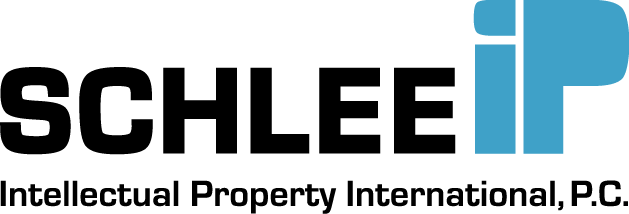Search and examination at the USPTO and the EPO
II. Search and examination options at the USPTO and the EPO
Download PDF
1. Overview procedure USPTO and EPO
3. Continuing patent applications
4. Appeal options
5. Acceleration
6. Quick reference guide
II. Search and Examination
Both the USPTO and the EPO conduct search and examination during the patent prosecution. These searches are conducted by the USPTO and the EPO searching for the “prior art” that is relevant for the allowability of the patent application. However, the procedures differ between the USPTO and the EPO and applicants should be aware of these differences.
II-A. Search and examination options at the USPTO
Since USPTO Examiners conduct both search and examination, USPTO Examiners tend to conduct additional searches throughout the joint search and examination process, specifically if relatively significant amendments are made to the claims. Although the number of Office Actions is typically limited to 2, namely a first and a final Office Action when the second Office Action is mandated by the amendments made by the Applicant in reply to the first Office Action, an essentially infinite number of Requests for Continued Examination (RCE) can be filed. In an effort to reduce the number of essentially unnecessary RCEs, the USPTO implemented, a few years ago, an After Final Consideration pilot program. Applicants qualify if certain preconditions are met qualifying for this program, one of which being that a claim amendment is made limiting the scope of the independent claims. Although requiring a relatively significant official fee and having some other procedural strings attached to it, a “Track One” option exists, significantly accelerating the speed of the patent prosecution. Although no Oral Proceedings as of right are provided at the USPTO, Examiners are typically very approachable by telephone and Examiner interviews can be conducted by telephone, in person or even by video conference. Examiner interviews are encouraged by the USPTO in order to increase patent prosecution efficiency. The typical duration for such Examiner interviews is 30 minutes, although at the discretion of the Examiner, up to say 15 additional minutes may often be granted. Since the purpose of allowing Examiner interviews is to increase efficiency, the Applicant should make sure to prepare an agenda for the telephone interview and preferably discuss this agenda with the Examiner at the outset, and needless to say be well prepared.
II-B. Search and examination options at the EPO
Search options at the EPO
For direct European patent applications, or International Patent Applications under the Patent Cooperation Treaty PCT where the EPO conducted the international search prior to the subsequent national phase entry before the EPO, no supplementary European search is performed in the regional phase before the EPO. The advantage is that this accelerates the prosecution since the search phase has been completed early on. However, on the downside, this means that the Applicant needs to have certainty early on about the pursued claims since amendments later on may trigger an unsearched subject matter rejection under Rule 137 (5) EPC. For direct European patent applications, divisional patent applications, or regional phase entries based on PCT with an International Searching Authority ISA differing from the EPO, the focus should be on the claims submitted with the original filing or in case of a regional phase entry submitted at the time of entering into that regional phase or in the alternative subsequently in reply to a Rule 161/162 EPC communication. The amended claims will then be the subject of the Supplementary European Search. Again, what hasn’t been searched cannot be examined and trying to convince the EPO to examine unsearched subject matter or make the Examining Division search in the prior art again are unsuccessful most of the time. For more details about this topic and specifically options how to fix this problem, please see “Remedies That May Fix Search Limitations”.
Examination options at the EPO
There is no limit on the number of Office Actions by the European Patent Office and accordingly no limit on the number of replies. As long as the Examining Division is under the impression that progress is made, it is typically willing to keep the examination procedure open. Although the EPO is no longer as open to informal Examiner interviews as it used to be, it keeps up the open policy to request formal Oral Proceedings under Article 116 EPC before all three Examiners of the Examining Division and upon a request – which can be included in office action replies as an Auxiliary Request – sends summons to attend such Oral Proceedings if it comes to the conclusion that that progress in the examination proceedings has come to a halt. During Oral Proceedings additional requests for amendments that have not been filed at the latest one month prior to the Oral Proceedings are only admitted at the discretion of the Examining Division. The EPO allows conditional requests, also known as Auxiliary Requests and deals with these one at a time in the sequence of their numbering. Although no limit on the number of Auxiliary Requests is set, an excessive number of these typically impacts the chances that these are reviewed seriously. Typical may be one main request and two or three subsidiary requests, although a higher number may sometimes still be good practice, specifically if these requests are closely related. It may sometimes be possible to negotiate an allowable set of claims with the 1st Examiner prior to the date of Oral Proceedings and consequently have the Oral Proceedings canceled. However, this often can only be achieved very close in time to the Oral Proceedings, say about two weeks prior, at the time when the Examining Division starts preparing for the Oral Proceedings. This means a thorough response to the summons to Oral Proceedings can typically not be spared, due as mentioned at the latest one month prior to the Oral Proceedings for securing that the requests are entered for the Oral Proceedings.

 English
English Deutsch
Deutsch